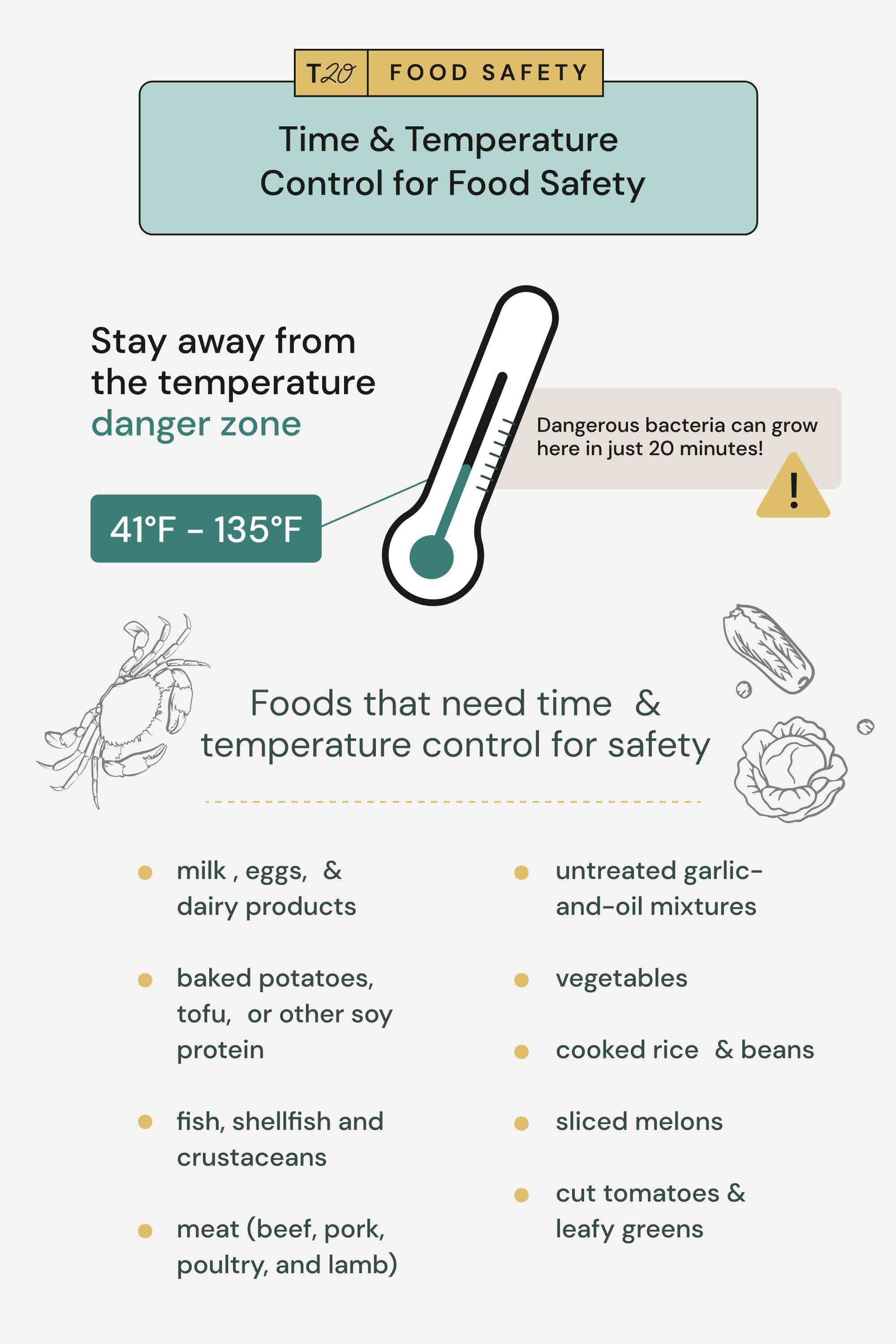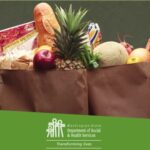As a foodservice professional, ensuring food safety is paramount. Understanding Time and Temperature Control for Safety (TCS) foods is crucial. These foods require specific temperature controls to prevent the growth of harmful bacteria. This guide will delve into TCS foods and, importantly, identify what falls outside this category.
What are TCS Foods?
TCS foods, or Time/Temperature Control for Safety foods, need specific temperature control to remain safe. These foods possess a combination of moisture, nutrients, and pH levels that encourage rapid bacterial growth. Examples include meat, poultry, fish, shellfish, dairy products, and cooked rice and pasta.
However, remember that even non-TCS foods can pose risks if mishandled. Combination foods containing both TCS and non-TCS ingredients can also present a challenge.
 TCS Foods Cheat Sheet
TCS Foods Cheat Sheet
TCS Foods Cheat Sheet showcasing various food items that require strict time and temperature control for safety.
Why are TCS Foods Dangerous?
The temperature “danger zone,” as defined by food safety regulations, lies between 41°F and 135°F. TCS foods left within this range for extended periods can foster rapid bacterial multiplication, leading to potential foodborne illnesses. Therefore, consistent temperature monitoring during storage, preparation, and service is vital.
For instance, raw chicken necessitates cooking to an internal temperature of 165°F to eliminate harmful bacteria like Salmonella and E. coli. TCS foods present hazards during transport and serving as well. Cold TCS foods must stay at or below 41°F during transport, while hot TCS foods must remain at or above 135°F. When serving, TCS foods should not be left at room temperature for more than two hours (or one hour if the temperature exceeds 90°F).
What Foods are TCS Foods?
The following list provides common examples of TCS foods:
- Meat, Poultry, Fish, and Shellfish: Raw or cooked, requiring refrigeration.
- Milk and Dairy: Milk, cheese, butter, and other milk-based products.
- Eggs: Bacteria can easily penetrate the shell and thrive.
- Soy and Tofu: Products containing soy can harbor bacteria in warm, moist conditions.
- Cut Melons or Tomatoes: High water content promotes bacterial growth.
- Cooked Potatoes: Anaerobic environments can cause botulism.
- Sprouts (or Sprouted Seeds): Raw sprouts can contain E.coli or Salmonella.
- Leafy Greens: Ruptured cell walls release nutrients that feed bacteria.
- Cooked Rice, Grains, Beans, and Other Veggies: Improper storage and reheating can lead to bacterial growth.
- Untreated Garlic and Oil Mixtures: Can foster botulism-causing bacteria.
What Factors Determine if a Food is TCS?
TCS foods generally possess high moisture and protein content, and are perishable. These foods also have a pH level above 4.6, an ideal range for bacterial growth. Proper temperature control (41°F or lower, or 135°F or higher) inhibits bacterial growth.
Preparation methods also influence TCS status. Raw or undercooked foods like sushi or rare steak are considered TCS due to potential contamination. Thoroughly cooked or pasteurized foods are less likely to be TCS, unless otherwise stated.
The FAT TOM principles (Food, Acidity, Time, Temperature, Oxygen, Moisture) offer another evaluation method. The more factors a food exhibits, the higher the probability of it being a TCS food.
Which of the Following is NOT a TCS Food?
Foods that are NOT usually TCS foods include dry goods, those with low water activity, high acidity, or low pH levels. These characteristics make them less prone to bacterial growth.
Examples of non-TCS foods:
- Bread
- Chips
- Candy
- Dried beans
- Uncooked rice
- Powdered milk
These items can typically be stored safely at room temperature.
A variety of dried goods, showcasing examples of foods that generally do not require strict time and temperature control for safety.
However, even non-TCS foods can become hazardous if mishandled or combined with TCS foods. Combination products containing both TCS and non-TCS ingredients are typically treated as TCS unless proven otherwise.
General Guidelines for TCS Foods
Adhering to these guidelines ensures food safety:
Temperature Danger Zones
The danger zone lies between 41°F and 135°F, where bacteria thrive. TCS foods should not remain in this zone for more than two hours (or one hour above 90°F).
Storage Requirements
Store TCS foods in clean, dry, sanitary areas away from potential contamination. Refrigeration at 41°F or lower is ideal. Frozen TCS foods should be kept at 0°F or lower.
Hot Holding Temperatures
Maintain hot TCS foods at 135°F or higher to prevent bacterial growth. Regularly monitor temperatures using a food thermometer.
Cold Holding Temperatures
Keep cold TCS foods at 41°F or lower. Use ice baths or cold-holding equipment to maintain proper temperatures during service.
Cooling Procedures
Cool TCS foods from 135°F to 70°F within two hours, and then from 70°F to 41°F within an additional four hours. Utilize shallow pans, ice baths, or blast chillers for rapid cooling.
Microwaving TCS Foods
Use microwave-safe dishes with covers. Rotate the dish to ensure even cooking, and always check the internal temperature with a food thermometer. Microwaves can cause uneven heating, so exercise caution.
FAQs about TCS Foods
| Is rice a TCS food? | Yes, cooked rice is a TCS food due to its neutral pH and high water activity, creating a favorable environment for bacterial growth if not properly handled. |
|---|---|
| Is uncooked pasta a TCS food? | No, uncooked pasta is not a TCS food. However, cooked pasta becomes a TCS food. |
| What is the ready-to-eat TCS food hold time? | Four hours is the maximum hold time for ready-to-eat TCS foods. Discard after four hours to prevent bacterial growth. |
| What is the correct temperature for receiving cold TCS food? | Receive cold TCS food at 41°F or lower to inhibit bacterial growth. |
| Does bread require time and temperature control? | Pre-packaged, shelf-stable bread does not. Freshly baked bread served warm should be held at 135°F or higher. |
| Are sprouts a TCS food? | Yes, sprouts are a TCS food due to their high risk of contamination and association with foodborne illness outbreaks. |
Final Thoughts
Understanding TCS foods is essential for all food handlers. By following food safety best practices, including proper storage and cooking, you can prevent contamination and protect customers from foodborne illnesses. Continuous education and up-to-date food handler certifications are crucial for maintaining food safety standards.
